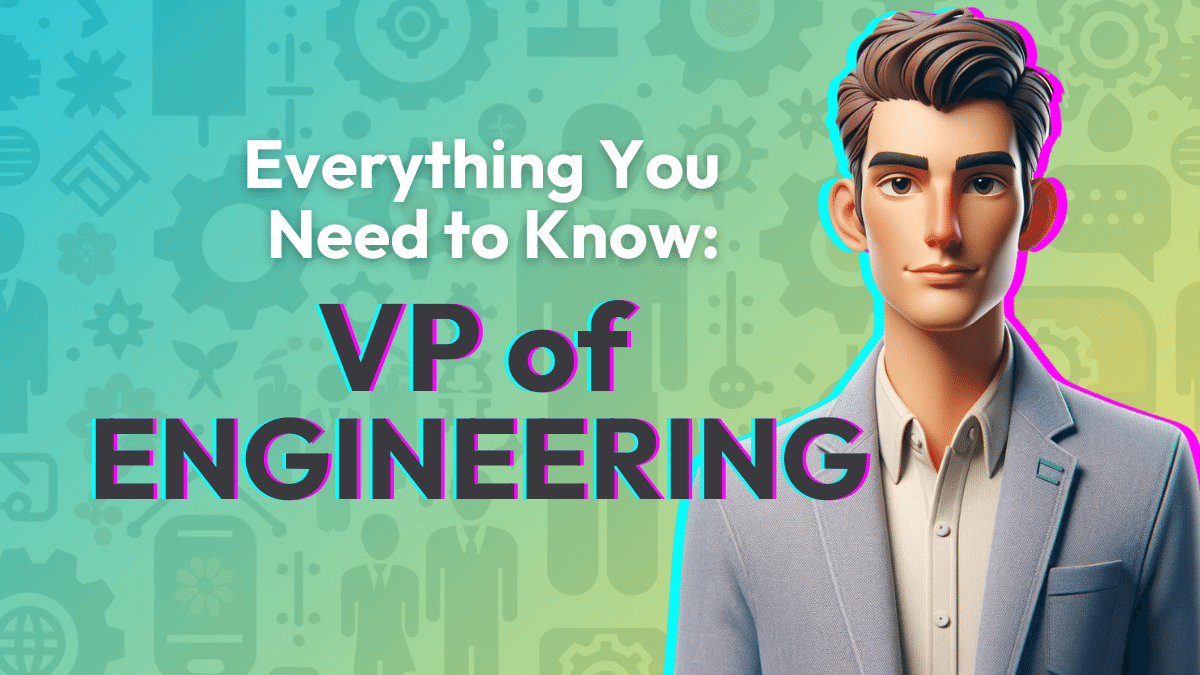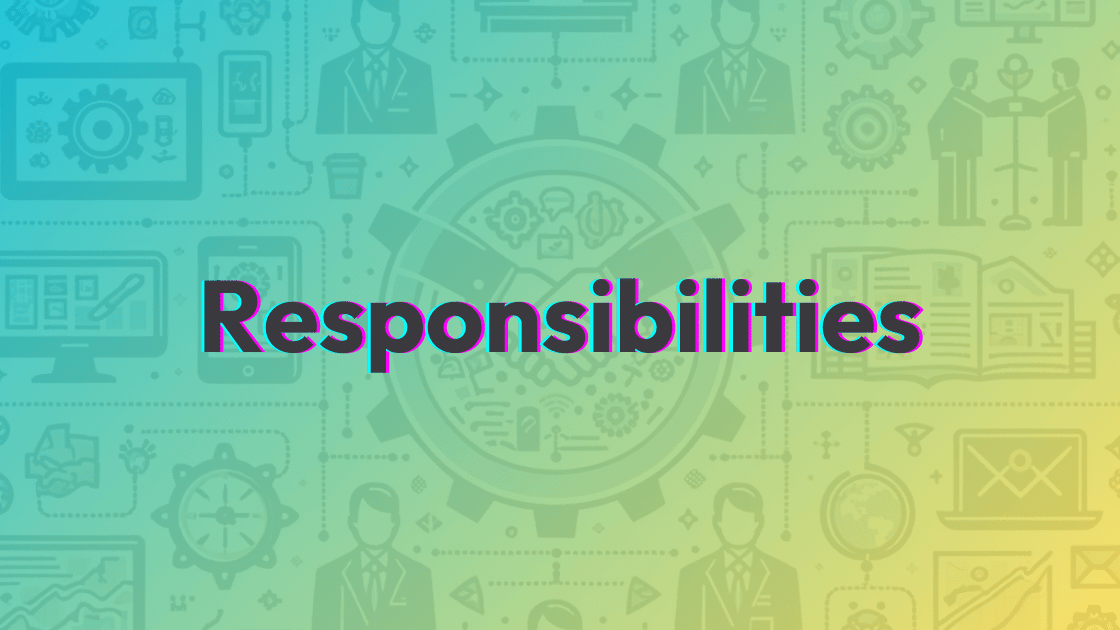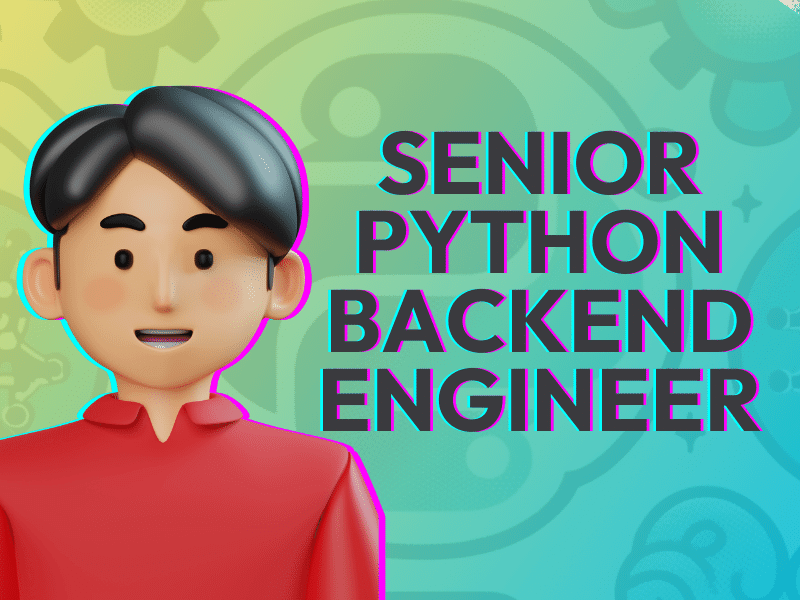VP of Engineering in Japan - What You Need to Know
If you're eyeing the Vice President of Engineering (VPoE) role in Japan, you've come to the right place.
With insights from Uros Cavic, a technical recruiter in Tokyo, I compiled a comprehensive guide to help you understand what this position entails in Japan's tech industry.
This is what Uros looks like:
Uros is working with a connected audio company looking to hire a VPoE.
He gave me all the info you need to land the job including the responsibilities, day to day tasks, requirements, tips for your resume and interviews, and why other applicants have been rejected.
There’s a lot to cover, so let’s get started.
What is a VPoE?
VPoE Stands for Vice President (VP) of Engineering.
The role of a Vice President of Engineering (VPoE) in Japan sits between an Engineering Manager and the CTO.
Unlike the hands-off CTO, you are expected to be more involved. While you won't be coding daily, understanding the system and technical requirements is crucial in communicating with the engineering team.
Your role is pivotal; you'll be driving technology decisions, and participating in stakeholder and board meetings.
Key Traits
Technical Proficiency: While not coding per se, a strong grasp of the system and technical requirements is essential.
Political Savvy: It's a role that requires navigating company politics, and aligning various interests towards technological goals.
Visionary Outlook: Companies in Japan often focus locally, but a VPoE should think globally, driving the company's vision forward.
Product Management Experience: Understanding the product from its roadmap is beneficial, ensuring alignment with the company’s vision.
Responsibilities of a VPoE in Japan
Technical Leadership and Strategy
Technology Direction: Define and drive the technological strategy in alignment with the company’s goals, ensuring that technical decisions support business objectives.
Product Roadmap Oversight: Collaborate closely with product management to understand and influence the product roadmap, ensuring that engineering efforts are in sync with company vision.
Team Management and Development
Team Oversight: Lead and mentor a team of at least 20 individuals, fostering a culture of innovation and excellence.
Talent Management: Play a key role in hiring, retaining, and developing top engineering talent, ensuring the team's skills align with the company's technological needs.
Stakeholder Engagement
Cross-Department Collaboration: Work with various departments, including product management, sales, and marketing, to ensure a cohesive approach to product development.
Communication with Upper Management: Regularly report to and collaborate with senior executives like the CTO and CEO, providing updates and strategic insights on engineering initiatives.
Operational Excellence
Process Improvement: Continuously evaluate and improve engineering processes and methodologies to enhance team efficiency and product quality.
Budget Management: Oversee the engineering budget, ensuring resources are allocated to meet project timelines and company objectives.
Visionary Leadership
Global Perspective: Encourage a global outlook to ensure competitiveness and innovation on a larger scale.
Foresight and Innovation: Act as a visionary, anticipating future technological trends and integrating them into current and future projects.
Communication and Influence
Internal Communication: Ensure clear and effective communication within the engineering team and across other departments, bridging any gaps in understanding or objectives.
External Representation: Represent the company’s engineering interests in external forums, conferences, and with clients, enhancing the company's technical reputation.
Now, let's break down what you will actually be doing every day of your life, except on weekends and holidays:
A Day in the Life of a VPoE in Japan
Morning: Strategic Alignment and Team Oversight
Start Your Day: Begin with a review of the current projects and their alignment with the company's strategic goals.
Team Check-In: Conduct a brief meeting with your engineering managers to gauge the progress of various teams, addressing any immediate concerns.
Mid-Morning: Collaboration and Planning
Collaborative Meetings: Engage in discussions with the CTO, Product Managers, and other key stakeholders to ensure everyone is on the same page regarding the product roadmap and company vision.
Technical Oversight: While you don't code, you spend time understanding the technical aspects of current projects to ensure they align with overall objectives.
Afternoon: Operational Management
People Management: Oversee the broader engineering team, making sure that everyone is effectively contributing to their projects and that team dynamics are healthy and productive.
Client and Stakeholder Interaction: Depending on the company's structure, you might have meetings with clients or external stakeholders to understand their needs and how they impact your team's work.
Late Afternoon: Vision and Growth
Future Planning: Dedicate time to think about the next steps and how current projects fit into the larger picture of the company's growth.
Innovation: Continuously explore new technologies or methodologies that could be implemented to enhance team performance or product quality.
Evening: Reflection and Preparation
End-of-Day Review: Reflect on the day's achievements and challenges, preparing a plan of action for the following day.
Professional Development: Stay updated with industry trends, potentially dedicating time to personal growth and learning, which is vital in a fast-evolving tech landscape.
What are the requirements to make this your everyday life as a QA Engineer in Japan?
Requirements for a VPoE in Japan
Leadership and People Management
Proven Leadership: Demonstrated ability to lead and manage a large team (minimum of 20 people), including hiring, mentoring, and developing engineering talent.
Team Building: Skills in building cohesive teams and fostering a positive, productive work environment.
Technical Expertise
Technical Background: Strong technical foundation, preferably with experience in engineering, to effectively understand and guide technical discussions and decisions.
Understanding of Current Technologies: Up-to-date knowledge of current technologies and trends to lead the team effectively and make informed decisions.
Business Acumen
Strategic Thinking: Ability to align engineering strategies with business objectives, understanding how technical decisions impact the overall business.
Product Management Experience: Insight into product management processes, helping to bridge the gap between engineering and product development.
Communication Skills
Bilingual Proficiency: Fluency in both English and Japanese is essential for effective communication within the team and with stakeholders.
Stakeholder Management: Strong skills in communicating with and managing expectations of stakeholders, including senior executives, team members, and clients.
Cultural and Market Understanding
Global vs Local Perspective: Understanding of the need to balance a global outlook with local market dynamics.
Cultural Adaptability: Ability to adapt to and work effectively within the diverse cultural nuances of the Japanese business environment.
Experience and Education
Senior-Level Experience: Extensive experience in a senior engineering management role, demonstrating an ability to handle high-level responsibilities.
Educational Background: A degree in a relevant field, such as computer science, engineering, or a related technical discipline, is often preferred.
Problem-Solving and Innovation
Analytical Thinking: Strong problem-solving skills, with the ability to tackle complex challenges and develop innovative solutions.
Visionary Approach: Capacity to think ahead and plan for future technological advancements and market shifts.
Here are the 5 skills that Uros said you should focus on to get a job as a VPoE.
5 Skills That Will Make You Stand Out
1. Communication
Why It Matters: Effective communication is crucial for leading diverse teams, liaising with various departments, and ensuring that everyone is aligned with the company's vision and goals.
How to Build It:
Practice Active Listening: Focus on understanding others' viewpoints in meetings and discussions.
Engage in Cross-Cultural Communication: Learn about Japanese business etiquette and communication styles.
Public Speaking and Presentation: Enhance your ability to convey complex ideas clearly and compellingly.
2. Relevant Titles
Why It Matters: Having relevant past titles demonstrates your experience and capability in roles of similar magnitude and responsibility.
How to Build It:
Career Planning: Aim for roles that progressively increase in responsibility and relevance to a VPoE position.
Role Expansion: In your current role, seek responsibilities that align more closely with VPoE duties.
Professional Development: Engage in continuous learning and take on leadership roles in professional organizations or groups.
3. Technical Background
Why It Matters: A strong technical background ensures you understand the challenges your team faces and can guide technical decisions effectively.
How to Build It:
Stay Updated: Regularly update yourself on the latest technologies relevant to your field.
Hands-On Experience: Occasionally involve yourself in technical projects or tasks.
Continuous Learning: Attend workshops, courses, and seminars to deepen your technical knowledge.
4. Experience in Both Big Companies and Startups
Why It Matters: Experience in diverse company sizes shows adaptability and a broad understanding of different organizational dynamics and challenges.
How to Build It:
Diverse Employment: Seek opportunities to work in different types of companies.
Networking: Build a network across various industry sectors to gain insights into different organizational cultures.
Project Collaboration: Work on projects that involve collaboration with companies of different sizes.
5. People Management Skills
Why It Matters: Strong people management skills are essential for leading large teams, fostering a positive work environment, and driving team performance.
How to Build It:
Mentorship: Either become a mentor or find a mentor in leadership.
Leadership Training: Participate in leadership development programs or workshops.
Feedback Culture: Regularly seek and provide feedback to understand management strengths and areas for improvement.
What is the career path for you as a QA Engineer?
Career Progression
The path from VPoE leads to top-tier positions like CTO or even CEO. It's a role that not only demands technical and managerial expertise but also a strategic vision for the company.
Path to Becoming a VPoE
Education and Early Career
Start with a relevant degree: Typically in Computer Science, Engineering, or a related technical field.
Entry-Level Position: Begin your career in a technical role such as a Software Developer or Engineer.
Mid-Level Advancement
Senior Engineer/Developer: Progress to a senior technical role, gaining deep technical expertise.
Team Lead/Technical Lead: Start leading smaller teams or projects, developing initial leadership and management skills.
Management Roles
Engineering Manager: Move into a role where you're managing a larger team and taking on more strategic responsibilities.
Director of Engineering: Oversee multiple teams or a significant segment of the engineering department.
Senior Leadership
VPoE: Step into the role of Vice President of Engineering, where you're leading the entire engineering department and collaborating closely with other senior leaders like CTOs and CEOs.
Progression from VPoE
CTO (Chief Technology Officer)
Moving from VPoE to CTO involves taking on more strategic, company-wide technology decisions and less day-to-day management.
CEO (Chief Executive Officer)
Some VPoEs may transition into CEO roles, especially in technology companies, leveraging their deep understanding of the business and technology landscape.
Entrepreneurial Ventures
Leveraging the experience and network gained as a VPoE, some professionals may choose to start their own tech companies or become consultants.
Board Membership or Advisory Roles
Experienced VPoEs also move into board memberships or advisory roles, providing guidance and strategic advice to other companies.
Ready to apply? Use this link to reach out to us!
Before you do, here are some tips from Uros to help you land the job.
Tips for Landing a VPoE Job
Building Relevant Skills and Experience
Enhance Technical Skills: Continue improving your technical knowledge and understanding, even if you're not coding daily. Stay updated with the latest technologies and trends in your field.
Develop Communication Skills: Focus on strengthening both your English and Japanese language skills. Effective communication across different teams and stakeholders is crucial.
Innovate and Propose New Ideas: Demonstrate your ability to think ahead. Regularly propose innovative solutions and ideas that align with the company's future goals.
Understand Business and Politics: Develop a keen sense for navigating company politics and aligning different interests. Cultivate patience and a strategic approach to decision-making.
Resume Tips
Highlight Management Experience: Clearly articulate your experience in managing technical teams. Detail specific achievements where your leadership led to tangible improvements.
Showcase Technical Achievements: Include accomplishments that highlight your technical understanding and how it contributed to product improvements or business outcomes.
Quantify Your Impact: Whenever possible, use quantifiable data to demonstrate how your leadership positively impacted the team or product (e.g., "Led a team of 20 engineers to deliver a product that increased customer engagement by 30%").
Leadership Style: Provide insight into your management style and how it has evolved. Highlight any specific methodologies or practices you've implemented for team development.
Interview Tips
Understand the Company's Culture and Goals: Research the company thoroughly. Understand their products, culture, and business goals to align your responses.
First Meeting Approach: If possible, aim for a more casual initial meeting to understand each other. This helps in gauging whether your ideas and management style align with the company's vision.
Be Respectful and Open-Minded: Show respect and openness during the interview, regardless of the outcome. Maintaining a positive relationship is important, as it could lead to future opportunities.
Ask Strategic Questions: Inquire about the company's structure, vision for the product, and the specific achievements they expect from a VPoE. This shows your interest and strategic thinking.
Let’s go over the reasons Uros has seen people get rejected.
Reasons for Rejection for a VPoE Position
1. Insufficient Language Proficiency
Details: Fluency in Japanese, in addition to English, is often a critical requirement, even in companies that are multilingual. This is essential for effective communication with all team members and stakeholders.
Overcoming This: Enhance your language skills through courses, immersion, or professional language training. Regular practice in a business context is beneficial.
2. Lack of Adequate People Management Experience
Details: Candidates may be turned down if they have insufficient experience in managing large teams or lack a track record of successful team leadership and development.
Overcoming This: Seek opportunities to lead larger teams or take on more significant management roles. Engage in leadership development programs and actively seek feedback on your management style.
3. Cultural Misfit
Details: Not aligning with the company's culture or vision will be a deal-breaker. This includes differing approaches to business, technology, or team management.
Overcoming This: Research the company's culture in depth. Understand their values, work style, and vision. During interviews, try to demonstrate how your approach and values align with theirs.
4. Inadequate Technical Understanding
Details: Candidates who lack a deep understanding of the technical aspects of projects or are unable to effectively communicate with the engineering team may not be considered suitable for the role.
Overcoming This: Continuously update your technical knowledge. Engage in discussions with technical teams, and if possible, involve yourself in technical aspects of projects to stay connected with the field's evolving nature.
5. Overemphasis on Technical Skills
Details: Conversely, focusing too much on technical prowess while neglecting the importance of leadership and strategic business understanding will lead to rejection.
Overcoming This: Balance your technical expertise with strong leadership and strategic business skills. Show that you think broadly about the company's goals and how technology will be used to achieve them.
6. Misalignment with Strategic Goals
Details: If your vision and approach to technology do not align with the company's strategic goals or the direction they wish to take, it could lead to a rejection.
Overcoming This: Understand the company's long-term strategic goals and think about how your skills and experience will contribute to these objectives. Articulate this alignment clearly in your interactions.
FAQ
What's the difference between a VPoE and a CTO?
The VPoE is more hands-on with the technical side and closely involved with the engineering team, while the CTO often takes a more strategic, high-level approach.
Can foreign nationals be successful as VPoEs in Japan?
Yes, foreign nationals have been successful VPoEs in Japan, provided you have a strong understanding of the local language and business culture. Adaptability and cultural sensitivity are key.
What are the key differences in the VPoE role between startups and established corporations in Japan?
In startups, VPoEs often wear multiple hats and are involved in hands-on development, while in larger corporations, the role is more strategic and involves managing larger teams and resources.
How does the role of a VPoE in Japan compare to other countries?
The VPoE role in Japan may place a greater emphasis on understanding and integrating into Japanese business culture and practices, compared to other countries where there might be a different corporate environment.
What is the average tenure for a VPoE in a Japanese company?
The tenure varies widely, but in Japan, longer tenures are common due to the cultural emphasis on loyalty and long-term relationships in business.
How does a VPoE interact with other departments within a Japanese company?
A VPoE typically collaborates closely with departments like Product Management, Marketing, and Sales, ensuring that the technological development aligns with the company's overall strategy and market needs.
What is the typical career background of a VPoE in Japan?
VPoEs often come from a background in engineering or technology, with significant experience in project management and team leadership.
How important is technological innovation in the role of a VPoE in Japan?
Technological innovation is key. A VPoE is expected to drive innovation while balancing the practical aspects of technology implementation and team management.
Are there specific industries in Japan where the demand for VPoEs is higher?
Demand for VPoEs is particularly high in industries like technology, automotive, electronics, and telecommunications, which are prominent sectors in Japan.
What is the impact of digital transformation on the VPoE role in Japan?
Digital transformation has significantly increased the importance of the VPoE role, as companies are relying more on technology-driven strategies and solutions.
Ready to apply?
Message us using this link to find out what VP of Engineering roles are open in Tokyo right now!






























